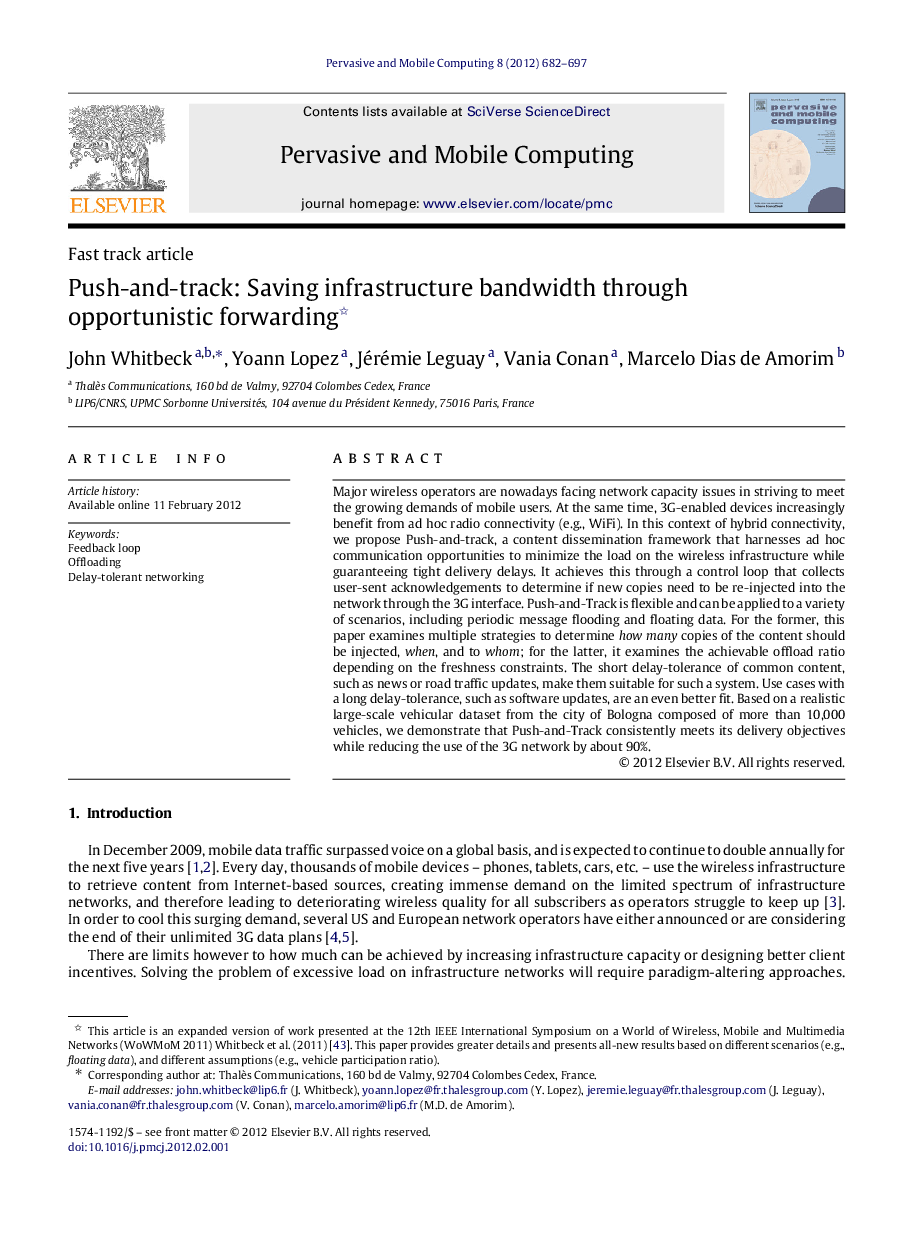| Article ID | Journal | Published Year | Pages | File Type |
|---|---|---|---|---|
| 466234 | Pervasive and Mobile Computing | 2012 | 16 Pages |
Major wireless operators are nowadays facing network capacity issues in striving to meet the growing demands of mobile users. At the same time, 3G-enabled devices increasingly benefit from ad hoc radio connectivity (e.g., WiFi). In this context of hybrid connectivity, we propose Push-and-track, a content dissemination framework that harnesses ad hoc communication opportunities to minimize the load on the wireless infrastructure while guaranteeing tight delivery delays. It achieves this through a control loop that collects user-sent acknowledgements to determine if new copies need to be re-injected into the network through the 3G interface. Push-and-Track is flexible and can be applied to a variety of scenarios, including periodic message flooding and floating data. For the former, this paper examines multiple strategies to determine how many copies of the content should be injected, when, and to whom; for the latter, it examines the achievable offload ratio depending on the freshness constraints. The short delay-tolerance of common content, such as news or road traffic updates, make them suitable for such a system. Use cases with a long delay-tolerance, such as software updates, are an even better fit. Based on a realistic large-scale vehicular dataset from the city of Bologna composed of more than 10,000 vehicles, we demonstrate that Push-and-Track consistently meets its delivery objectives while reducing the use of the 3G network by about 90%.
